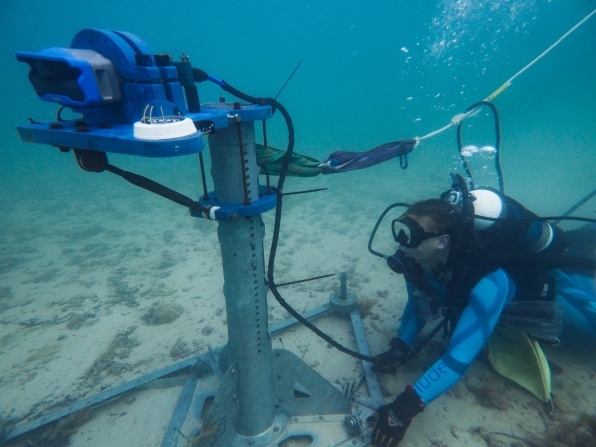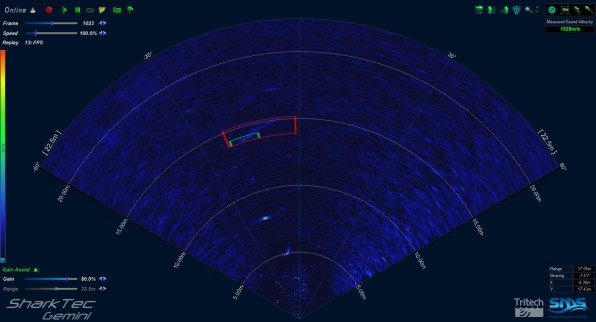Sharks get a bad rap as “man-eaters,” because that’s how they’ve been cast in popular culture for the last half-century, from Jaws to The Shallows. Sharks can’t even catch a break on the new Netflix reality baking show Nailed It, with contestants in one episode being asked to recreate an edible disaster-piece–a cake shaped like a great white that just so happens to be gobbling up a surfer.
Even as the ocean’s apex predator, this reputation isn’t at all fair. Around the world last year, unprovoked shark attacks (where humans do not initiate physical contact) resulted in just five fatalities–one fewer than the global average over the last decade. Meanwhile, humans carve up 100 million sharks and rays annually (a conservative estimate), causing enormous gaps in the aquatic ecosystem that directly disrupts the carbon cycle and incidentally reduces carbon capture by sea grasses, further heating the planet.

Still, the fear of being bitten by a shark–literally any shark–is understandable. As rare as incidents already are, they might soon be even rarer, thanks to a new solution that comes out of Australia. Called the Clever Buoy, it’s an eco-friendly ocean monitoring system that uses dual-wave sonar and artificial intelligence to detect and identify large marine life underwater more accurately than your standard fish-finder.
“Every animal in the ocean has a unique fingerprint, and its fingerprint is its swim pattern–that holds down to a subspecies level in some fish,” says inventor Craig Anderson, the founder of Shark Mitigation Systems, the company behind the buoy. “What we’ve developed is a pattern recognition software that is learning the different swim patterns of animals in the ocean. It’s a bit like early-stage facial recognition software.”
In other words, a dolphin’s swim pattern is distinct from a seal’s, which is different than that of a stingray or snapper or shark–and the Clever Buoy can distinguish them all. It’s a modular system, tailored to the specific depth and geography of a beach. The solar-powered buoy floats on the water’s surface and is linked to sonar transducers attached to the ocean floor or a pier. Each transducer casts what Anderson calls a “virtual net” over a 120-meter radius, constantly identifying wildlife in the area–there is no limit on targets.
Currently the system, which Anderson says was “developed hand-in-glove with lifeguards,” can identify a shark from anything else in the water in under four seconds. In such cases, the Clever Buoy relays information about the size of the shark (or sharks) and location in real time to lifeguards and first responders on the nearest beach, to help inform decisions about what to do with surfers and swimmers in the water.
Clever Buoys have been installed along Sydney’s very popular Bondi Beach, as well as City Beach in Perth, on the country’s western coast. A more portable system has been used for World Surf League events, triathlons, and other open-water competitions. “Everyone loves it,” Anderson says. “It’s peace of mind, you know?”

In February, the Clever Buoy immigrated to California, with the support of Republican congressman Dana Rohrabacher. Its first deployment will be at Big Corona in Corona del Mar, near Huntington Beach, the site of a near fatality in 2016.
Shark Mitigation Systems and the Newport Beach City Council are still finalizing details, but Anderson says that the first American Clever Buoy will be leased to the city at a cost between $10,000 and $15,000 a month. To date, there have been zero fatalities or shark incidents on beaches equipped with the Clever Buoy, in large part because the tech outperforms traditional detection methods like aerial patrols by plane or helicopter (or drone).
As machine learning improves the algorithm to be able to distinguish, say, a hammerhead from a bull shark, or identify a repeat visitor based on its specific water displacement, the Clever Buoy promises to help us learn more about shark populations and migration patterns, and how climate change affects both.
The device has applications far beyond beach safety, from helping us better understand our oceans to informing conservation and commercial fishing policies. “Even after 12 years of tagging here in Australia, researchers reckon that they’ve tagged less than 5% of adult white sharks. This system could help us find and identify the other 95%,” Anderson says. “Plus, it records everything from wave height to wind swell to water temperature to pollution and acidity levels–all of those environmental things, we’re logging, and that’s available in real time.”
(19)